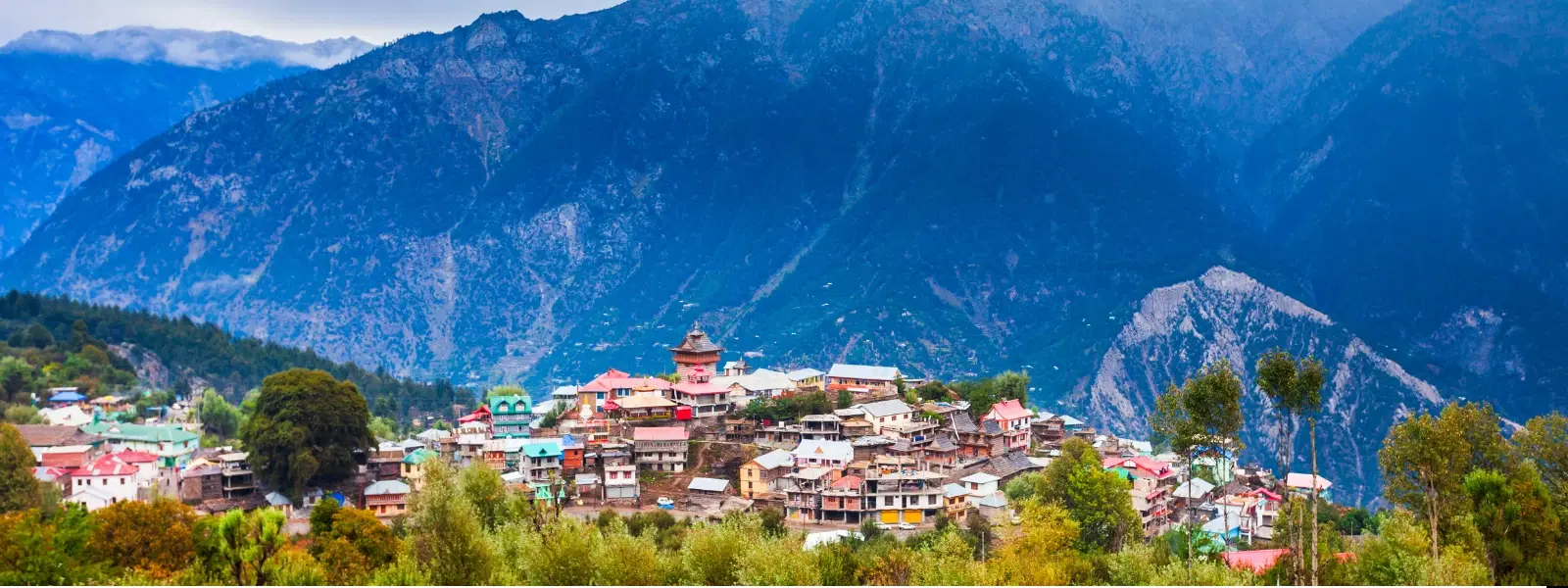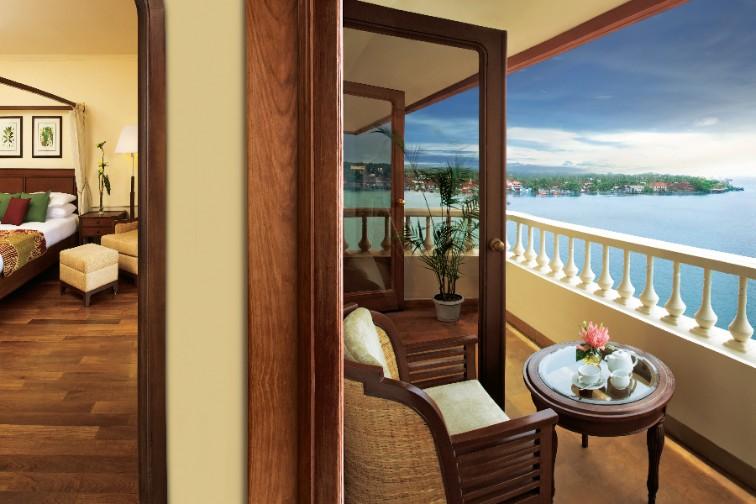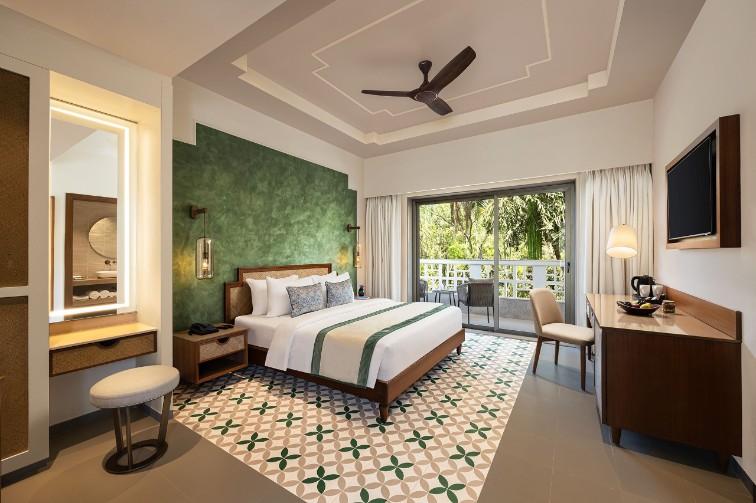
Hotels
•05 min read
Imagine waking up to panoramic views of snow-capped mountains, surrounded by serene apple orchards, and breathing in crisp mountain air. Kalpa, a charming village in Himachal Pradesh, offers this and much more. Known for its ever-changing landscape and unique seasonal experiences, Kalpa attracts travelers who long for a blend of adventure and tranquility. In this guide, you will discover the seven best months to visit Kalpa for ideal weather and views while learning key insights on planning the perfect trip.
Kalpa's climate is an evolving tapestry that changes with the seasons. In spring, the apple orchards burst into bloom as the weather turns mild and inviting. Summer brings clear skies and comfortably warm days, making it the ideal time for trekking and sightseeing. Come autumn, the village is treated to vibrant hues as the leaves change color, while winter offers a magical wonderland with snowfall blanketing the terrain. Each season offers a distinct charm, influencing not only the scenery but also the activities available. Whether you’re an avid trekker, a photography enthusiast, or simply in search of peaceful solitude, knowing the seasonal impacts can help you pick the month that suits your interests.
The weather in Kalpa plays a crucial role in shaping the experiences of visitors. For example, attractions such as Kinner Kailash and Suicide Point offer different vistas depending on the season. In the warm months, road conditions are optimal for road trips, while winter may sometimes bring unexpected road closures due to heavy snowfall. Travelers should be alert to these changes to ensure a safe and enjoyable journey. In essence, the best time to visit Kalpa depends largely on the type of experience you seek – whether it’s adventurous trekking trails or more relaxed days capturing nature's bounty through your lens.
Spring in Kalpa is nothing short of enchanting. During March and April, the apple orchards begin to bloom, transforming the village into a canvas of pastel colors. The temperate weather makes it perfect for nature walks and engaging with the local culture. With the natural beauty at its peak and mild conditions prevalent, these months are ideal for travelers who want to experience Kalpa’s fresh beginnings.
May and June mark the onset of summer when Kalpa welcomes travelers with pleasant temperatures and crystal clear skies. This time of year is perfect for trekkers and sightseeing enthusiasts who can take full advantage of extended daylight hours and favorable weather. Despite being peak tourist season, smart planning and booking in advance can help avoid the larger crowds. Whether you’re exploring hidden trails or simply enjoying the panoramic mountain views, summer in Kalpa will not disappoint.
Autumn in Kalpa is a dream come true for photographers and nature lovers alike. The landscape comes alive with vibrant autumn colors, and the temperatures are just right for outdoor activities. The serenity of the season ensures that the area remains relatively uncrowded, making it an excellent time to immerse yourself fully in the natural beauty without the interference of bustling tourist groups.
Kalpa is a treasure trove of activities and attractions that change with the seasons. In spring, wander through blossoming orchards and enjoy leisurely nature strolls. Summer invites you to engage in trekking and discover hidden trails that offer breathtaking views of the mountains. Autumn is ideal for cultural tours and photography, with nature displaying a mosaic of warm hues. Winters, on the other hand, cater to those who love snow adventures and serene landscapes, where every turn offers a postcard-perfect view.
Planning an itinerary that suits the month of your visit can dramatically enhance your Kalpa experience. In spring, consider a day trip to the surrounding valleys to witness the blooming apple orchards. Summer itineraries can include multi-day treks with a mix of local cultural encounters. For autumn, a peaceful itinerary focusing on photography and leisurely walks around the village can be especially rewarding. Winter trips, meanwhile, should include visits to nearby attractions like Chitkul or Sangla, where the snowy terrains complement Kalpa’s winter charm. Each itinerary is designed to address seasonal nuances and maximize your exposure to the region’s natural beauty.
March to June and September to October offer pleasant weather and stunning views, while December to February is ideal for those who love snow.
Both destinations provide unique experiences. Kalpa is known for its panoramic mountain views and lush apple orchards, whereas Chitkul features untouched natural beauty with serene riversides.
A 3-4 day trip is generally enough to explore major attractions, soak in the landscapes, and enjoy the tranquil surroundings.
Absolutely. With its diverse landscapes, cultural depth, and seasonally changing beauty, Kalpa is a hidden gem that promises a memorable experience for any traveler.
Kalpa is a destination that transforms with the passing months, offering ever-changing experiences that cater to all types of travelers. Whether you are drawn by the allure of blooming orchards in spring, the clear skies of summer, the colorful charm of autumn, or the serene snowy setting of winter, planning your trip at the right time will ensure that you capture the essence of what makes this region so special. By using this guide, you can embrace the unique offerings of Kalpa and experience its unmatched natural beauty and cultural richness with confidence.
For those who have a soft spot for winter wonderlands, December through February in Kalpa is magical. Snowfall transforms the village into a serene, pristine retreat. The breathtaking winter landscapes, complete with frost-kissed trees and icy vistas, create an ambiance that is both mysterious and inviting. However, it is important to come prepared with appropriate winter clothing and be aware of potential road closures for a safe travel experience.
Finding the right place to stay in Kalpa is essential for a fulfilling visit. A range of hotels and homestays cater to various budgets without compromising on comfort or access to stunning views. Many accommodations are strategically located near key attractions, ensuring that guests can easily explore local landmarks like Kinner Kailash and Roguey Village. Whether you are looking for a cozy room with mountain vistas or a homestay experience that brings you closer to nature, Kalpa offers a diverse selection.
Accommodation recommendations vary with the seasons. In the winter, many travelers prefer cozy lodges with heated rooms and fireplaces, designed to keep you warm while you enjoy the snowy landscape. Summer visitors, on the other hand, often opt for scenic stays that highlight open-air terraces and panoramic views. With peak seasons comes high demand, so early booking can help secure the best deals. These options ensure that no matter the month, your stay in Kalpa enhances your overall travel experience.
Preparing for Kalpa requires thoughtful packing, aligned with the seasonal demands. For a winter trip, pack warm layers such as thermal wear, insulated jackets, gloves, and hats. If you’re traveling during the summer, lighter clothing along with a sturdy pair of walking shoes and a hat for sun protection will suffice. Spring and autumn call for a mix of both warm and cool-weather gear. A well-prepared suitcase tailored to the season will ensure that you embrace every moment without unexpected weather surprises.
Each season in Kalpa presents its own challenges. Monsoon rains may lead to slippery roads and reduced visibility, while winter can unexpectedly disrupt travel plans with sudden snowfall. Summer might bring larger crowds to popular sites. Planning ahead by booking transportation and accommodations early can help alleviate these challenges. Remaining flexible and vigilant about weather updates also enhances your overall travel experience.
Pro Tip from the Experts
Did you know? Visiting Kalpa in autumn not only offers spectacular views but also lets you experience fewer crowds and lower accommodation rates. It’s the perfect time for budget-conscious travelers seeking serenity.


